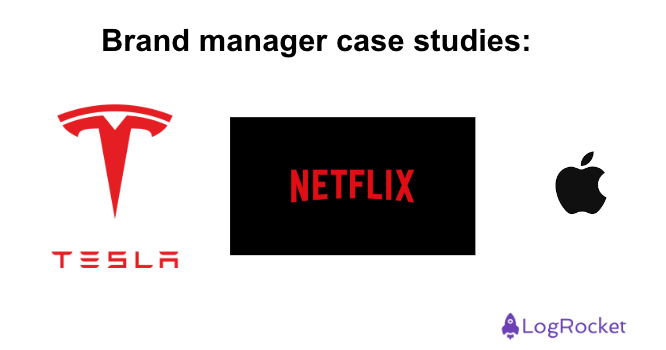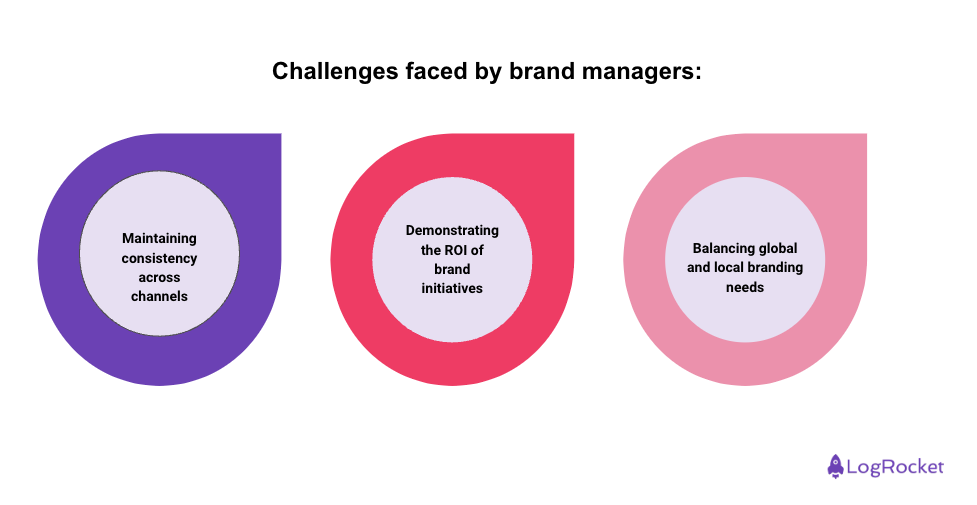When it comes to a company, few things are more important than the brand. The brand forms your identity, but requires someone who can create it, safeguard it, and grow it. Because of this, you need someone who takes ownership of the brand and makes sure that it maintains its consistency and resonates with your target audience.

Enter the brand manager. Keep reading to learn more about the role of a brand manager, the essential skills needed, and the impact they can make.
A brand manager develops and executes strategies that create, maintain, and enhance the identity and market position of a brand. They create a compelling brand story and ensure its consistency in messaging and visual presentation across all platforms, apps, and touchpoints.
The key responsibilities of a brand manager include:
A successful brand manager needs a diverse skill set that blends strategic thinking with creativity. Strong communication and an emphasis on data-driven market research can help you stand out as a brand manager. You want to gain the skills that ensure your brand resonates with your target audience and stays ahead of competitors.
The essential skills for a successful brand manager include:
To better understand brand management, here are some examples where brand managers had a significant impact on the success of the organization:

From product design to marketing campaigns, Apple maintains a cohesive brand image centered around simplicity, elegance, and cutting-edge technology. The “Think Different” campaign exemplifies how the company connects emotionally with customers, enhancing both brand loyalty and equity.
Even the Apple Stores provide a seamless and engaging customer experience, reinforcing the company’s brand values. The “Genius Bar” offers personalized support, making customers feel values and strengthening their bond with the brand.
The emphasis on auto-pilot and self-driving capabilities highlights Tesla’s leadership in autonomous driving technology, positioning it as a forward-thinking and innovative company. Additionally, the company’s direct-to-consumer sales model and strong online presence provides a unique, user-friendly, consistent customer experience.
Through social media and digital forums, Tesla actively engages with its target audience, building a loyal community invested in the brand’s success and future developments.
Netflix uses sophisticated algorithms and data analytics to tailor content recommendations, creating a personalized viewing experience that keeps users engaged and satisfied. With continuous investment in original content, the brand differentiates itself and adds unique value, reinforcing its position as a leader in the streaming industry.
Its ability to adapt to changing viewer preferences and technological advancements ensures it remains relevant and competitive. Netflix’s commitment to global expansion and localized content caters to diverse audiences, further enhancing its global brand equity.
The following tips provide guidance on how a brand manager can effectively work with a product manager:
It’s important to know and understand the brand’s vision, identity, values, and strategic objectives. This understanding forms the foundation for aligning product offerings, project goals, and deliverables with the overarching brand strategy.
As a product manager, you should familiarize yourself with brand guidelines, messaging, and target audience preferences to ensure that the project outcomes reflect the brand’s image accurately.
You should respect and adhere to the brand guidelines provided by the brand manager. These guidelines define the visual and verbal elements that represent the brand, including, logos, color palettes, fonts, tone of voice, etc.
Also, ensure that all project deliverables, from marketing materials to product features, align with these guidelines to maintain brand consistency and customer experience across all touchpoints.
As a product manager, actively seek feedback from the brand manager throughout the project lifecycle. Encourage open and effective dialogue about project progress, creative concepts, and potential adjustments needed to better align with brand objectives.
Be responsive to the feedback and be willing to make the changes needed to ensure that the project outcomes effectively support the brand’s strategic objectives and resonate deeply with its target audience. Also, obtain and address feedback from cross-functional teams.
Like any position, a brand manager faces challenges unique to their role. Some of the most common ones include:

Ensuring consistent brand messaging, visuals, and customer experience across various channels and platforms can be challenging, especially as brands expand or undergo rebranding. This challenge can be addressed by developing a comprehensive set of brand guidelines that clearly outline brand elements and how to use them.
Implement centralized tools where these guidelines are easily accessible by all stakeholders. Regularly audit brand touchpoints to ensure compliance and consistency. Conduct training sessions for internal teams and external partners to reinforce brand guidelines and expectations.
Quantifying the ROI of branding initiatives can be challenging due to their long-term and indirect impact on sales. This challenge can be addressed by defining clear objectives and KPIs for each branding initiative. Track and measure brand awareness, perception, and customer engagement metrics.
Conduct regular brand performance evaluations and audits to assess the effectiveness of branding strategies. Align branding efforts with business outcomes, such as customer acquisition, retention, and revenue growth. Present data-driven reports and case studies to demonstrate the tangible impact of branding efforts on the overall business goals.
Brands operating in multiple regions or countries must balance global brand consistency with local cultural preferences, regulations, and market dynamics. This challenge can be addressed by developing a hybrid approach that maintains core brand values and brand identity while allowing for localized adaptations.
Conduct thorough market research in each region to understand cultural nuances and customer behavior. Establish clear communication channels between global headquarters and regional offices to facilitate collaboration and alignment. Create regional teams and hire locals, if needed.
A brand manager shapes and safeguards a company’s brand identity, ensuring consistency, relevance, and resonance with the target audience. By overseeing brand strategy, communication, and market positioning, brand managers play a crucial role in driving brand equity, fostering customer loyalty, and ultimately contributing to business growth.
If you decide you might be interested in becoming a brand manager, this guide should help you have a sense of the skills required and the daily role. Even if you want to remain a PM, knowing more about the role helps you work better with your own brand manager. Feel free to comment with any questions!
Featured image source: IconScout

LogRocket identifies friction points in the user experience so you can make informed decisions about product and design changes that must happen to hit your goals.
With LogRocket, you can understand the scope of the issues affecting your product and prioritize the changes that need to be made. LogRocket simplifies workflows by allowing Engineering, Product, UX, and Design teams to work from the same data as you, eliminating any confusion about what needs to be done.
Get your teams on the same page — try LogRocket today.

A practical framework for PMs to use AI in ideation without sacrificing judgment, strategy, or decision quality.

A practical five minute revenue estimation method to help product managers compare ideas, drop low impact features, and prioritize smarter.

A practical guide for PMs who want to stop being bottlenecks, delegate smarter, and lead teams effectively with a clear ownership framework.

Stop letting unreliable data block features. Treat data as inventory to track quality, ownership, and ship with confidence.